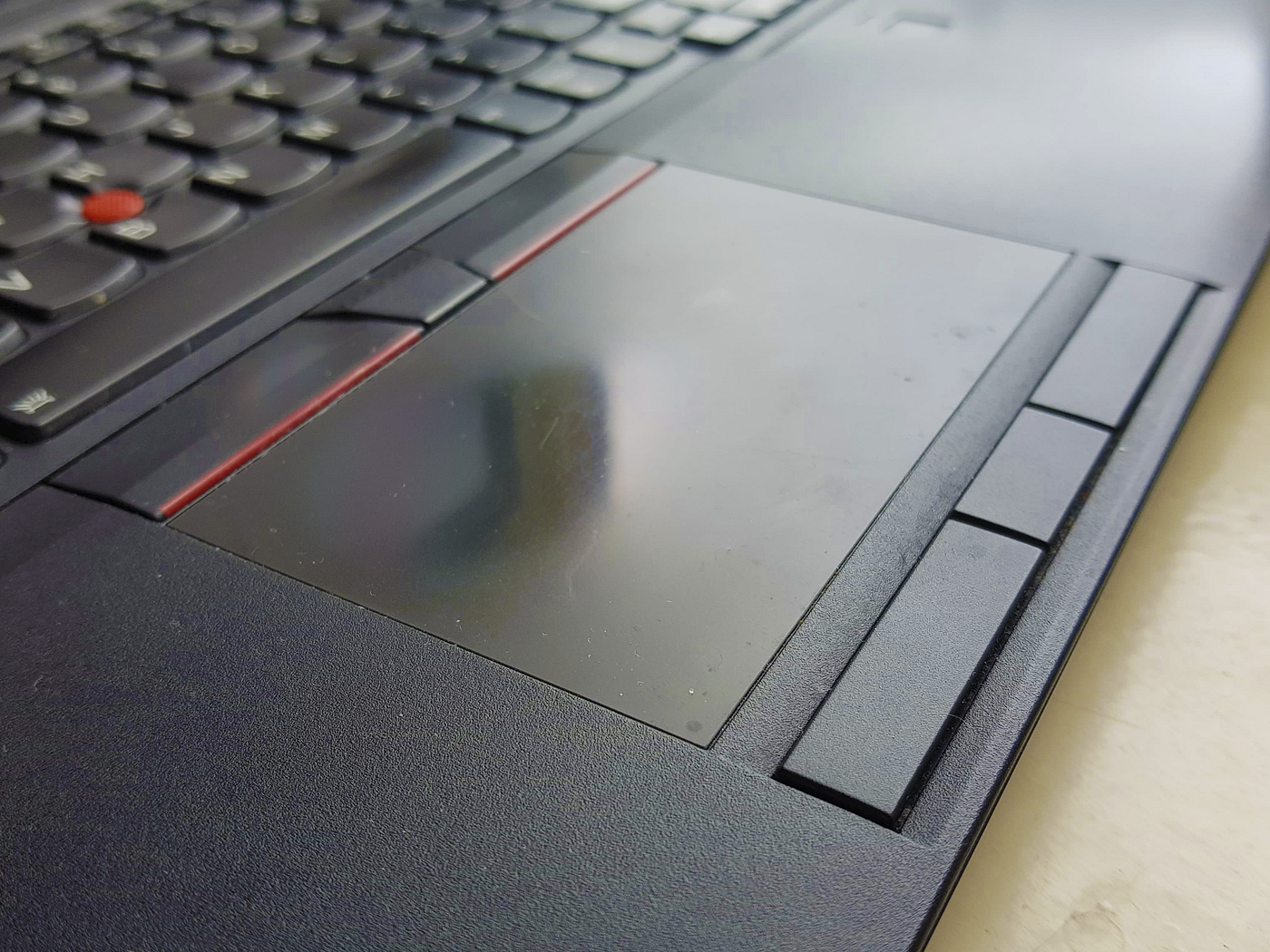Reprint of my blog post on Medium.com
In the first of my series on design and health, I’m writing about my personal un-favorite: the push to click integral trackpad found on most laptops today. Their development for aesthetic sleekness has come at the expense of the user’s tendon, joint, and muscle health.

Now, if you’re not familiar with the term push to click trackpad, it’s the rectangular area of the laptop below the keyboard where you can move the cursor on the screen. In order to click, you have to push down on the trackpad. Prior to the push to click era, these pads usually had buttons either above them, below them, or both, more or less mimicking the traditional mouse. I still use this type of trackpad — in fact, I seek out laptops mostly based on this single point. To use this type of trackpad, I rest my hand on the laptop so my wrist lies flat, then position my index finger to just move a small amount on the trackpad while my middle finger does the clicking. One finger moves while the other presses down.

Push to click trackpads, on the other hand, require much more force on a single finger, and make some programs where you have to click and drag frequently— such as Photoshop — a literal pain to use. Because of my carpal tunnel, rheumatoid arthritis, and neuropathy, having to hold down the trackpad with a single finger while moving it causes pain that increases the more I use the trackpad. I’m far from the only one with this problem.
A simple search for “trackpad click pain” brings up multiple stories of users with problems simply because “the trackpad is too hard to click for me, to the point that it can get painful,” and confused users asking why their trackpads are causing them hand and wrist pain.
Many Inspire members have given up on trackpads and touchpads entirely because of this. There are a myriad of recommendations on Inspire for alternative methods of interacting with computers. Such hacking includes using a touchpad to move the cursor and footpedals for clicking. Voice control is very popular with those who simply can’t take the pain caused by modern trackpads: “It helps a lot for those of us who have very painful and/or limited use of the upper extremities.” These ideas are wonderful, but I wonder: why are these trackpads designed in a way that is so miserable to use?
Sadly, the answer seems to be “visual design elegance.” The 1997 paper,“Tactile Touchpad,” describes how an early push to click trackpad was designed to mimic how a mouse worked, while maintaining a sleekness of design. The authors theorized that push to click would work better than buttons with a touchpad because you clicked buttons on a touchpad with either your thumb or index finger. They did not appear to consider the alternative that many of us with hand mobility issues have settled on: the use of the index/middle finger combination. This paper seems to have influenced major laptop manufacturers who wanted to make their products look more polished, high end, luxury, and less “geeky.” Trackpad buttons were among the first things to go in the quest for slimming things down.
I admit, push to click trackpads do make laptops look more like something from Tiffany than something from Radio Shack. But I wonder, were the new trackpads extensively user tested? Were there any ergonomic studies done on it or its successors? Unfortunately, I don’t know. I have sent inquiries to major laptop manufacturers, but haven’t received a response as of this writing.
Regardless of how they were initially conceived and tested, in 2021 we know the importance of ergonomics on health. Many manufacturers of independent (meaning not integrated into the laptop) trackpads/touchpads are now making models that have buttons, are rounded to reduce wrist stress, and that provide other ergonomic choices. Hopefully some of these ergonomic ideas will make it into the next generation of laptops and their trackpads.
Have a design that has made your health better or worse? Let me know!